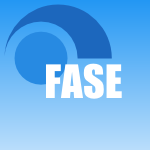96 papers:
 DAC-2015-KashyapGS #design #reliability
DAC-2015-KashyapGS #design #reliability- Achieving power and reliability sign-off for automotive semiconductor designs (AK, SG, SS), p. 6.
 DATE-2015-HuQ #approximate #fault
DATE-2015-HuQ #approximate #fault- A new approximate adder with low relative error and correct sign calculation (JH, WQ), pp. 1449–1454.
 CSCW-2015-BraggRL #taxonomy
CSCW-2015-BraggRL #taxonomy- A User-Powered American Sign Language Dictionary (DB, KR, REL), pp. 1837–1848.
 CSCW-2015-StateA #online #social
CSCW-2015-StateA #online #social- The Diffusion of Support in an Online Social Movement: Evidence from the Adoption of Equal-Sign Profile Pictures (BS, LAA), pp. 1741–1750.
 DUXU-IXD-2015-IslamI #comprehension #interface #ontology #semantics #set #web
DUXU-IXD-2015-IslamI #comprehension #interface #ontology #semantics #set #web- Understanding the Semantics of Web Interface Signs: A Set of Ontological Principals (MNI, AKMNI), pp. 46–53.
 ICEIS-v3-2015-IatskiuGC #automation #generative
ICEIS-v3-2015-IatskiuGC #automation #generative- Automatic Generation of LIBRAS Signs by Graphic Symbols of SignWriting (CEAI, LSG, RdPC), pp. 71–78.
 KDD-2015-Kaban #bound #random
KDD-2015-Kaban #bound #random- Improved Bounds on the Dot Product under Random Projection and Random Sign Projection (AK), pp. 487–496.
 KDD-2015-SongMT #network #performance #recommendation
KDD-2015-SongMT #network #performance #recommendation- Efficient Latent Link Recommendation in Signed Networks (DS, DAM, DT), pp. 1105–1114.
 SIGIR-2015-Drutsa #evaluation #metric #online #quality
SIGIR-2015-Drutsa #evaluation #metric #online #quality- Sign-Aware Periodicity Metrics of User Engagement for Online Search Quality Evaluation (AD), pp. 779–782.
 SAC-2015-LevoratoDFF #algorithm #network #social
SAC-2015-LevoratoDFF #algorithm #network #social- An ILS algorithm to evaluate structural balance in signed social networks (ML, LMdAD, YF, RMVdF), pp. 1117–1122.
 DUXU-ELAS-2014-VilarDRNV #artificial reality #case study #using
DUXU-ELAS-2014-VilarDRNV #artificial reality #case study #using- A Pilot Study Using Virtual Reality to Investigate the Effects of Emergency Egress Signs Competing with Environmental Variables on Route Choices (EV, ED, FR, PN, EV), pp. 369–377.
 ICML-c2-2014-BenavoliCMZR #process
ICML-c2-2014-BenavoliCMZR #process- A Bayesian Wilcoxon signed-rank test based on the Dirichlet process (AB, GC, FM, MZ, FR), pp. 1026–1034.
 ICPR-2014-HazelhoffCW #classification #trade-off #word
ICPR-2014-HazelhoffCW #classification #trade-off #word- Optimal Performance-Efficiency Trade-off for Bag of Words Classification of Road Signs (LBH, IMC, PHNdW), pp. 2996–3001.
 ICPR-2014-ViitaniemiKL
ICPR-2014-ViitaniemiKL- Experiments on Recognising the Handshape in Blobs Extracted from Sign Language Videos (VV, MK, JL), pp. 2584–2589.
 SAC-2014-AdibuzzamanAL #monitoring #personalisation #smarttech #using
SAC-2014-AdibuzzamanAL #monitoring #personalisation #smarttech #using- A personalized model for monitoring vital signs using camera of the smart phone (MA, SIA, RL), pp. 444–449.
 CHI-2013-RonenRJT #how #question
CHI-2013-RonenRJT #how #question- Taking data exposure into account: how does it affect the choice of sign-in accounts? (SR, OR, MJ, DT), pp. 3423–3426.
 CSCW-2013-KusunokiSZB #comprehension #monitoring #visual notation
CSCW-2013-KusunokiSZB #comprehension #monitoring #visual notation- Understanding visual attention of teams in dynamic medical settings through vital signs monitor use (DSK, AS, ZZ, RSB), pp. 527–540.
 DUXU-CXC-2013-MouraVCBSTLK #exclamation #game studies #how #learning #mobile
DUXU-CXC-2013-MouraVCBSTLK #exclamation #game studies #how #learning #mobile- Luz, Câmera, Libras!: How a Mobile Game Can Improve the Learning of Sign Languages (GdSM, LAV, AC, FB, DdS, JMXNT, CWML, JK), pp. 266–275.
 DUXU-NTE-2013-VilarRNTDF #question
DUXU-NTE-2013-VilarRNTDF #question- Are Emergency Egress Signs Strong Enough to Overlap the Influence of the Environmental Variables? (EV, FR, PN, LT, ED, EF), pp. 205–214.
 DUXU-PMT-2013-Islam13a #interface #towards #web
DUXU-PMT-2013-Islam13a #interface #towards #web- Towards Determinants of User-Intuitive Web Interface Signs (MNI), pp. 84–93.
 HCI-AS-2013-LimaRSBSO #learning
HCI-AS-2013-LimaRSBSO #learning- Innovation in Learning — The Use of Avatar for Sign Language (TL, MSR, TAS, AB, ES, HSdO), pp. 428–433.
 MLDM-2013-SouzaP #random #recognition #word
MLDM-2013-SouzaP #random #recognition #word- Sign Language Recognition with Support Vector Machines and Hidden Conditional Random Fields: Going from Fingerspelling to Natural Articulated Words (CRdS, EBP), pp. 84–98.
 ICALP-v1-2012-GoldbergJ #approximate #complexity #polynomial
ICALP-v1-2012-GoldbergJ #approximate #complexity #polynomial- The Complexity of Computing the Sign of the Tutte Polynomial (and Consequent #P-hardness of Approximation) (LAG, MJ), pp. 399–410.
 ICEIS-v3-2012-SantanaB #summary #user interface #visualisation
ICEIS-v3-2012-SantanaB #summary #user interface #visualisation- Visualizing User Interface Events — Event Stream Summarization through Signs (VFdS, MCCB), pp. 78–85.
 CIKM-2012-ChiangWD #clustering #network #normalisation #scalability #using
CIKM-2012-ChiangWD #clustering #network #normalisation #scalability #using- Scalable clustering of signed networks using balance normalized cut (KYC, JJW, ISD), pp. 615–624.
 ICPR-2012-LiuWXZS #classification
ICPR-2012-LiuWXZS #classification- Soft-signed sparse coding for ground-based cloud classification (SL, CW, BX, ZZ, YS), pp. 2214–2217.
 ICPR-2012-MogelmoseTM #comparative #dataset #detection #evaluation #learning
ICPR-2012-MogelmoseTM #comparative #dataset #detection #evaluation #learning- Learning to detect traffic signs: Comparative evaluation of synthetic and real-world datasets (AM, MMT, TBM), pp. 3452–3455.
 KDD-2012-HsiehCD #modelling #network #rank
KDD-2012-HsiehCD #modelling #network #rank- Low rank modeling of signed networks (CJH, KYC, ISD), pp. 507–515.
 MLDM-2012-KalpakisYHMSSS #analysis #permutation #predict #using
MLDM-2012-KalpakisYHMSSS #analysis #permutation #predict #using- Outcome Prediction for Patients with Severe Traumatic Brain Injury Using Permutation Entropy Analysis of Electronic Vital Signs Data (KK, SY, PFMH, CFM, LGS, DMS, TMS), pp. 415–426.
 SIGIR-2012-YangSLZC #network #predict #social
SIGIR-2012-YangSLZC #network #predict #social- Friend or frenemy?: predicting signed ties in social networks (SHY, AJS, BL, HZ, YC), pp. 555–564.
 VMCAI-2012-ChatterjeeR #contract #protocol
VMCAI-2012-ChatterjeeR #contract #protocol- Synthesizing Protocols for Digital Contract Signing (KC, VR), pp. 152–168.
 DAC-2011-AbrishamiLQFP #optimisation #power management
DAC-2011-AbrishamiLQFP #optimisation #power management- Post sign-off leakage power optimization (HA, JL, JQ, JF, MP), pp. 453–458.
 FASE-2011-ErmelGLT #behaviour #consistency #control flow #functional #modelling
FASE-2011-ErmelGLT #behaviour #consistency #control flow #functional #modelling- Modeling with Plausibility Checking: Inspecting Favorable and Critical Signs for Consistency between Control Flow and Functional Behavior (CE, JG, LL, GT), pp. 156–170.
 HCI-UA-2011-Nesset #evaluation #visual notation
HCI-UA-2011-Nesset #evaluation #visual notation- Following the Signs: Children’s Use of Visual Cues to Facilitate Website Evaluation (VN), pp. 599–606.
 HIMI-v2-2011-HosonoIMSNTY
HIMI-v2-2011-HosonoIMSNTY- Service Science Method to Create Pictograms Referring to Sign Languages (NH, HI, HM, MS, YN, YT, SY), pp. 123–130.
 EDOC-2011-Bellamy-McIntyreLW #analysis #authentication #enterprise #modelling
EDOC-2011-Bellamy-McIntyreLW #analysis #authentication #enterprise #modelling- OpenID and the Enterprise: A Model-Based Analysis of Single Sign-On Authentication (JBM, CL, GW), pp. 129–138.
 CIKM-2011-ChiangNTD #network #predict
CIKM-2011-ChiangNTD #network #predict- Exploiting longer cycles for link prediction in signed networks (KYC, NN, AT, ISD), pp. 1157–1162.
 DATE-2010-MullerBGRNZB #design #implementation #manycore #recognition
DATE-2010-MullerBGRNZB #design #implementation #manycore #recognition- Design of an automotive traffic sign recognition system targeting a multi-core SoC implementation (MM, AGB, JG, WR, DN, JMZ, OB), pp. 532–537.
 HT-2010-Gwizdka #documentation #navigation
HT-2010-Gwizdka #documentation #navigation- Of kings, traffic signs and flowers: exploring navigation of tagged documents (JG), pp. 167–172.
 STOC-2010-Sherstov #bound
STOC-2010-Sherstov #bound- Optimal bounds for sign-representing the intersection of two halfspaces by polynomials (AAS), pp. 523–532.
 CHI-2010-CavenderOBL #collaboration #online
CHI-2010-CavenderOBL #collaboration #online- Asl-stem forum: enabling sign language to grow through online collaboration (AC, DSO, JPB, REL), pp. 2075–2078.
 CHI-2010-LeskovecHK #network #social #social media
CHI-2010-LeskovecHK #network #social #social media- Signed networks in social media (JL, DPH, JMK), pp. 1361–1370.
 ICPR-2010-BelaroussiFTSCP #case study #detection #image
ICPR-2010-BelaroussiFTSCP #case study #detection #image- Road Sign Detection in Images: A Case Study (RB, PF, JPT, BS, PC, NP), pp. 484–488.
 ICPR-2010-HuangT #recognition
ICPR-2010-HuangT #recognition- A Vision-Based Taiwanese Sign Language Recognition (CLH, BLT), pp. 3683–3686.
 ICPR-2010-LiPG #detection #evaluation #realtime
ICPR-2010-LiPG #detection #evaluation #realtime- Real-Time Traffic Sign Detection: An Evaluation Study (YL, SP, WG), pp. 3033–3036.
 ICPR-2010-MehtaSJBJ
ICPR-2010-MehtaSJBJ- Recognizing Sign Language from Brain Imaging (NAM, TS, MMJ, KOB, GAJ), pp. 3842–3845.
 ICPR-2010-YangL10a #random #recognition #robust
ICPR-2010-YangL10a #random #recognition #robust- Robust Sign Language Recognition with Hierarchical Conditional Random Fields (HDY, SWL), pp. 2202–2205.
 ICPR-2010-ZafrullaBYPSH #education #game studies #verification
ICPR-2010-ZafrullaBYPSH #education #game studies #verification- American Sign Language Phrase Verification in an Educational Game for Deaf Children (ZZ, HB, PY, PP, TS, HH), pp. 3846–3849.
 SAC-2010-BaudetD #algorithm #permutation
SAC-2010-BaudetD #algorithm #permutation- An improved algorithm to enumerate all traces that sort a signed permutation by reversals (CB, ZD), pp. 1521–1525.
 DAC-2009-OnaissiHN #optimisation #process
DAC-2009-OnaissiHN #optimisation #process- Clock skew optimization via wiresizing for timing sign-off covering all process corners (SO, KRH, FNN), pp. 196–201.
 ICEIS-AIDSS-2009-Rojas-MoraG #fuzzy #nondeterminism #set
ICEIS-AIDSS-2009-Rojas-MoraG #fuzzy #nondeterminism #set- The Signing of a Professional Athlete — Reducing Uncertainty with a Weighted Mean Hemimetric for Phi — Fuzzy Subsets (JRM, JGL), pp. 158–163.
 ICPR-2008-AgrisBK #adaptation #agile #approach #recognition #using
ICPR-2008-AgrisBK #adaptation #agile #approach #recognition #using- Rapid signer adaptation for continuous sign language recognition using a combined approach of eigenvoices, MLLR, and MAP (UvA, CB, KFK), pp. 1–4.
 ICPR-2008-MatsuoSS #automation #generative #recognition
ICPR-2008-MatsuoSS #automation #generative #recognition- Automatic generation of HMM topology for sign language recognition (TM, YS, NS), pp. 1–4.
 ICPR-2008-ZhangK #automation #detection
ICPR-2008-ZhangK #automation #detection- Automatic road sign detection method based on Color Barycenters Hexagon model (QZ, SiK), pp. 1–4.
 DHM-2007-KurodaOKTOY #animation #coordination
DHM-2007-KurodaOKTOY #animation #coordination- Finding Origin Points for New Coordinate System Suitable for Sign Animation (TK, KO, RK, TT, NO, HY), pp. 415–422.
 SAT-2007-Kullmann #invariant #matrix #polynomial #satisfiability
SAT-2007-Kullmann #invariant #matrix #polynomial #satisfiability- Polynomial Time SAT Decision for Complementation-Invariant Clause-Sets, and Sign-non-Singular Matrices (OK), pp. 314–327.
 ICPR-v1-2006-AwadHS #recognition #segmentation
ICPR-v1-2006-AwadHS #recognition #segmentation- A Unified System for Segmentation and Tracking of Face and Hands in Sign Language Recognition (GA, JH, AS), pp. 239–242.
 ICPR-v1-2006-IshidaTIMM #generative #identification #learning
ICPR-v1-2006-IshidaTIMM #generative #identification #learning- Identification of degraded traffic sign symbols by a generative learning method (HI, TT, II, YM, HM), pp. 531–534.
 ICPR-v1-2006-WangCWG #invariant #recognition #verification
ICPR-v1-2006-WangCWG #invariant #recognition #verification- A Verification Method for Viewpoint Invariant Sign Language Recognition (QW, XC, CW, WG), pp. 456–459.
 ICPR-v2-2006-YangS #detection #random #using
ICPR-v2-2006-YangS #detection #random #using- Detecting Coarticulation in Sign Language using Conditional Random Fields (RY, SS), pp. 108–112.
 ICPR-v3-2006-YaoYLJ #algorithm #realtime #recognition #scalability
ICPR-v3-2006-YaoYLJ #algorithm #realtime #recognition #scalability- Real Time Large Vocabulary Continuous Sign Language Recognition Based on OP/Viterbi Algorithm (GY, HY, XL, FJ), pp. 312–315.
 ICPR-v3-2006-YoshimuraIY #adaptation #correlation #detection
ICPR-v3-2006-YoshimuraIY #adaptation #correlation #detection- Object Detection with Adaptive Background Model and Margined Sign Cross Correlation (HY, YI, MY), pp. 19–23.
 DAC-2005-SaneeiAN #encoding #power management #reduction
DAC-2005-SaneeiAN #encoding #power management #reduction- Sign bit reduction encoding for low power applications (MS, AAK, ZN), pp. 214–217.
 DATE-DF-2004-Horsky #precise
DATE-DF-2004-Horsky #precise- A 16 Bit + Sign Monotonic Precise Current DAC for Sensor Applications (PH), pp. 34–38.
 ICPR-v4-2004-FangGGC #approach #automation #novel
ICPR-v4-2004-FangGGC #approach #automation #novel- A Novel Approach to Automatically Extracting Basic Units from Chinese Sign Language (GF, XG, WG, YC), pp. 454–457.
 PLDI-2002-KawahitoKN #effectiveness
PLDI-2002-KawahitoKN #effectiveness- Effective Sign Extension Elimination (MK, HK, TN), pp. 187–198.
 ICPR-v1-2002-ErdemS #automation #communication #detection #gesture
ICPR-v1-2002-ErdemS #automation #communication #detection #gesture- Automatic Detection of Relevant Head Gestures in American Sign Language Communication (UME, SS), p. 460–?.
 ICPR-v1-2002-YuanGYW #modelling #recognition
ICPR-v1-2002-YuanGYW #modelling #recognition- Recognition of Strong and Weak Connection Models in Continuous Sign Language (QY, WG, HY, CW), pp. 75–78.
 ICPR-v2-2002-BauerK #recognition #self #using
ICPR-v2-2002-BauerK #recognition #self #using- Video-Based Sign Recognition Using Self-Organizing Subunits (BB, KFK), pp. 434–437.
 ICPR-v2-2002-Paletta #classification #detection #using
ICPR-v2-2002-Paletta #classification #detection #using- Detection of Traffic Signs Using Posterior Classifier Combination (LP), pp. 705–708.
 ECOOP-2002-NobleB
ECOOP-2002-NobleB- Patterns as Signs (JN, RB), pp. 368–391.
 TOOLS-USA-2002-Rausch #component #contract #design #quote
TOOLS-USA-2002-Rausch #component #contract #design #quote- “Design by Contract” + “Componentware” = “Design by Signed Contract” (AR), pp. 19–36.
 DAC-2001-ParkK #representation #synthesis
DAC-2001-ParkK #representation #synthesis- Digital Filter Synthesis Based on Minimal Signed Digit Representation (ICP, HJK), pp. 468–473.
 ICALP-2001-Baum-Waidner #contract #multi
ICALP-2001-Baum-Waidner #contract #multi- Optimistic Asynchronous Multi-party Contract Signing with Reduced Number of Rounds (BBW), pp. 898–911.
 ICALP-2000-Baum-WaidnerW #contract #multi
ICALP-2000-Baum-WaidnerW #contract #multi- Round-Optimal and Abuse Free Optimistic Multi-party Contract Signing (BBW, MW), pp. 524–535.
 ICPR-v1-2000-HuangH #using
ICPR-v1-2000-HuangH #using- Road Sign Interpretation Using Matching Pursuit Method (CLH, SHH), pp. 1329–1334.
 ICPR-v2-2000-BauerHK #recognition #statistics #using
ICPR-v2-2000-BauerHK #recognition #statistics #using- Video-Based Continuous Sign Language Recognition Using Statistical Methods (BB, HH, KFK), pp. 2463–2466.
 ICPR-v3-2000-FukuiIIW #analysis #component #using
ICPR-v3-2000-FukuiIIW #analysis #component #using- Sign of Gaussian Curvature from Eigen Plane Using Principal Components Analysis (SF, YI, AI, RJW), pp. 3807–3810.
 ICPR-v4-2000-ImagawaMTALI #recognition
ICPR-v4-2000-ImagawaMTALI #recognition- Recognition of Local Features for Camera-Based Sign Language Recognition System (KI, HM, RiT, DA, SL, SI), pp. 4849–4853.
 CL-2000-PearceGV #equilibrium #modelling #using
CL-2000-PearceGV #equilibrium #modelling #using- Computing Equilibrium Models Using Signed Formulas (DP, IPdG, AV), pp. 688–702.
 HCI-CCAD-1999-FujishigeJK #automaton #finite #recognition #using #word
HCI-CCAD-1999-FujishigeJK #automaton #finite #recognition #using #word- Recognition of Japanese sign language words using finite automata (EF, KJ, TK), pp. 167–171.
 HCI-EI-1999-KawanoK #animation #comprehension
HCI-EI-1999-KawanoK #animation #comprehension- The Effects of Facial Expression on Understanding Japanese Sign Language Animation (SK, TK), pp. 783–787.
 HCI-EI-1999-LuSUI
HCI-EI-1999-LuSUI- A New Method to Synthesize Japanese Sign Language Based on Intuitive Motion Primitives (SL, HS, TU, SI), pp. 441–445.
 CSL-1999-Rasmussen #logic
CSL-1999-Rasmussen #logic- Signed Interval Logic (TMR), pp. 157–171.
 HCI-SEC-1997-HigashinoK #video
HCI-SEC-1997-HigashinoK #video- A Hierarchical Browsing System for Sign Language Video (SH, HK), pp. 287–290.
 HCI-SEC-1997-LuII
HCI-SEC-1997-LuII- An Active Gazing-Line System for Improving Sign-Language Conversation (SL, KI, SI), pp. 283–286.
 HCI-SEC-1997-ZanottiRC
HCI-SEC-1997-ZanottiRC- Human Factors Principles for Variable Message Signs Utilized in Intelligent Transportation Systems (AZ, MLR, GC), pp. 339–342.
 SAS-1995-RamachandranH
SAS-1995-RamachandranH- LSign Reordered (VR, PVH), pp. 330–347.
 STOC-1995-HannenhalliP #algorithm #permutation #polynomial #sorting
STOC-1995-HannenhalliP #algorithm #permutation #polynomial #sorting- Transforming cabbage into turnip: polynomial algorithm for sorting signed permutations by reversals (SH, PAP), pp. 178–189.
 ILPS-1995-MessingS #logic programming #source code
ILPS-1995-MessingS #logic programming #source code- Regular Signed Resolution Applied to Annotated Logic Programs (BM, PvS), p. 638.
 ILPS-1994-Turner #logic programming #source code
ILPS-1994-Turner #logic programming #source code- Signed Logic Programs (HT), pp. 61–75.
 HCI-SHI-1993-KurokawaMW #bidirectional #communication #people
HCI-SHI-1993-KurokawaMW #bidirectional #communication #people- Bidirectional Translation between Sign Language and Japanese for Communication with Deaf-Mute People (TK, TM, SW), pp. 1109–1114.
 INTERCHI-1993-FrishbergCDWS #interface
INTERCHI-1993-FrishbergCDWS #interface- Sign language interfaces (NJF, SC, LD, SW, RS), pp. 194–197.
 STOC-1988-BellareM #how
STOC-1988-BellareM #how- How to Sign Given Any Trapdoor Function (Extended Abstract) (MB, SM), pp. 32–42.
 ICALP-1985-Ben-OrGMR #contract #protocol
ICALP-1985-Ben-OrGMR #contract #protocol- A Fair Protocol for Signing Contracts (Extended Abstract) (MBO, OG, SM, RLR), pp. 43–52.
 DAC-1974-Barnes #automation #design
DAC-1974-Barnes #automation #design- Automated sign design and stencil cutting system (WMB), pp. 300–307.
 DAC-2015-KashyapGS #design #reliability
DAC-2015-KashyapGS #design #reliability DATE-2015-HuQ #approximate #fault
DATE-2015-HuQ #approximate #fault CSCW-2015-BraggRL #taxonomy
CSCW-2015-BraggRL #taxonomy CSCW-2015-StateA #online #social
CSCW-2015-StateA #online #social DUXU-IXD-2015-IslamI #comprehension #interface #ontology #semantics #set #web
DUXU-IXD-2015-IslamI #comprehension #interface #ontology #semantics #set #web ICEIS-v3-2015-IatskiuGC #automation #generative
ICEIS-v3-2015-IatskiuGC #automation #generative KDD-2015-Kaban #bound #random
KDD-2015-Kaban #bound #random KDD-2015-SongMT #network #performance #recommendation
KDD-2015-SongMT #network #performance #recommendation SIGIR-2015-Drutsa #evaluation #metric #online #quality
SIGIR-2015-Drutsa #evaluation #metric #online #quality SAC-2015-LevoratoDFF #algorithm #network #social
SAC-2015-LevoratoDFF #algorithm #network #social DUXU-ELAS-2014-VilarDRNV #artificial reality #case study #using
DUXU-ELAS-2014-VilarDRNV #artificial reality #case study #using ICML-c2-2014-BenavoliCMZR #process
ICML-c2-2014-BenavoliCMZR #process ICPR-2014-HazelhoffCW #classification #trade-off #word
ICPR-2014-HazelhoffCW #classification #trade-off #word ICPR-2014-ViitaniemiKL
ICPR-2014-ViitaniemiKL SAC-2014-AdibuzzamanAL #monitoring #personalisation #smarttech #using
SAC-2014-AdibuzzamanAL #monitoring #personalisation #smarttech #using CHI-2013-RonenRJT #how #question
CHI-2013-RonenRJT #how #question CSCW-2013-KusunokiSZB #comprehension #monitoring #visual notation
CSCW-2013-KusunokiSZB #comprehension #monitoring #visual notation DUXU-CXC-2013-MouraVCBSTLK #exclamation #game studies #how #learning #mobile
DUXU-CXC-2013-MouraVCBSTLK #exclamation #game studies #how #learning #mobile DUXU-NTE-2013-VilarRNTDF #question
DUXU-NTE-2013-VilarRNTDF #question DUXU-PMT-2013-Islam13a #interface #towards #web
DUXU-PMT-2013-Islam13a #interface #towards #web HCI-AS-2013-LimaRSBSO #learning
HCI-AS-2013-LimaRSBSO #learning MLDM-2013-SouzaP #random #recognition #word
MLDM-2013-SouzaP #random #recognition #word ICALP-v1-2012-GoldbergJ #approximate #complexity #polynomial
ICALP-v1-2012-GoldbergJ #approximate #complexity #polynomial ICEIS-v3-2012-SantanaB #summary #user interface #visualisation
ICEIS-v3-2012-SantanaB #summary #user interface #visualisation CIKM-2012-ChiangWD #clustering #network #normalisation #scalability #using
CIKM-2012-ChiangWD #clustering #network #normalisation #scalability #using ICPR-2012-LiuWXZS #classification
ICPR-2012-LiuWXZS #classification ICPR-2012-MogelmoseTM #comparative #dataset #detection #evaluation #learning
ICPR-2012-MogelmoseTM #comparative #dataset #detection #evaluation #learning KDD-2012-HsiehCD #modelling #network #rank
KDD-2012-HsiehCD #modelling #network #rank MLDM-2012-KalpakisYHMSSS #analysis #permutation #predict #using
MLDM-2012-KalpakisYHMSSS #analysis #permutation #predict #using SIGIR-2012-YangSLZC #network #predict #social
SIGIR-2012-YangSLZC #network #predict #social VMCAI-2012-ChatterjeeR #contract #protocol
VMCAI-2012-ChatterjeeR #contract #protocol DAC-2011-AbrishamiLQFP #optimisation #power management
DAC-2011-AbrishamiLQFP #optimisation #power management FASE-2011-ErmelGLT #behaviour #consistency #control flow #functional #modelling
FASE-2011-ErmelGLT #behaviour #consistency #control flow #functional #modelling HCI-UA-2011-Nesset #evaluation #visual notation
HCI-UA-2011-Nesset #evaluation #visual notation HIMI-v2-2011-HosonoIMSNTY
HIMI-v2-2011-HosonoIMSNTY EDOC-2011-Bellamy-McIntyreLW #analysis #authentication #enterprise #modelling
EDOC-2011-Bellamy-McIntyreLW #analysis #authentication #enterprise #modelling CIKM-2011-ChiangNTD #network #predict
CIKM-2011-ChiangNTD #network #predict DATE-2010-MullerBGRNZB #design #implementation #manycore #recognition
DATE-2010-MullerBGRNZB #design #implementation #manycore #recognition HT-2010-Gwizdka #documentation #navigation
HT-2010-Gwizdka #documentation #navigation STOC-2010-Sherstov #bound
STOC-2010-Sherstov #bound CHI-2010-CavenderOBL #collaboration #online
CHI-2010-CavenderOBL #collaboration #online CHI-2010-LeskovecHK #network #social #social media
CHI-2010-LeskovecHK #network #social #social media ICPR-2010-BelaroussiFTSCP #case study #detection #image
ICPR-2010-BelaroussiFTSCP #case study #detection #image ICPR-2010-HuangT #recognition
ICPR-2010-HuangT #recognition ICPR-2010-LiPG #detection #evaluation #realtime
ICPR-2010-LiPG #detection #evaluation #realtime ICPR-2010-MehtaSJBJ
ICPR-2010-MehtaSJBJ ICPR-2010-YangL10a #random #recognition #robust
ICPR-2010-YangL10a #random #recognition #robust ICPR-2010-ZafrullaBYPSH #education #game studies #verification
ICPR-2010-ZafrullaBYPSH #education #game studies #verification SAC-2010-BaudetD #algorithm #permutation
SAC-2010-BaudetD #algorithm #permutation DAC-2009-OnaissiHN #optimisation #process
DAC-2009-OnaissiHN #optimisation #process ICEIS-AIDSS-2009-Rojas-MoraG #fuzzy #nondeterminism #set
ICEIS-AIDSS-2009-Rojas-MoraG #fuzzy #nondeterminism #set ICPR-2008-AgrisBK #adaptation #agile #approach #recognition #using
ICPR-2008-AgrisBK #adaptation #agile #approach #recognition #using ICPR-2008-MatsuoSS #automation #generative #recognition
ICPR-2008-MatsuoSS #automation #generative #recognition ICPR-2008-ZhangK #automation #detection
ICPR-2008-ZhangK #automation #detection DHM-2007-KurodaOKTOY #animation #coordination
DHM-2007-KurodaOKTOY #animation #coordination SAT-2007-Kullmann #invariant #matrix #polynomial #satisfiability
SAT-2007-Kullmann #invariant #matrix #polynomial #satisfiability ICPR-v1-2006-AwadHS #recognition #segmentation
ICPR-v1-2006-AwadHS #recognition #segmentation ICPR-v1-2006-IshidaTIMM #generative #identification #learning
ICPR-v1-2006-IshidaTIMM #generative #identification #learning ICPR-v1-2006-WangCWG #invariant #recognition #verification
ICPR-v1-2006-WangCWG #invariant #recognition #verification ICPR-v2-2006-YangS #detection #random #using
ICPR-v2-2006-YangS #detection #random #using ICPR-v3-2006-YaoYLJ #algorithm #realtime #recognition #scalability
ICPR-v3-2006-YaoYLJ #algorithm #realtime #recognition #scalability ICPR-v3-2006-YoshimuraIY #adaptation #correlation #detection
ICPR-v3-2006-YoshimuraIY #adaptation #correlation #detection DAC-2005-SaneeiAN #encoding #power management #reduction
DAC-2005-SaneeiAN #encoding #power management #reduction DATE-DF-2004-Horsky #precise
DATE-DF-2004-Horsky #precise ICPR-v4-2004-FangGGC #approach #automation #novel
ICPR-v4-2004-FangGGC #approach #automation #novel PLDI-2002-KawahitoKN #effectiveness
PLDI-2002-KawahitoKN #effectiveness ICPR-v1-2002-ErdemS #automation #communication #detection #gesture
ICPR-v1-2002-ErdemS #automation #communication #detection #gesture ICPR-v1-2002-YuanGYW #modelling #recognition
ICPR-v1-2002-YuanGYW #modelling #recognition ICPR-v2-2002-BauerK #recognition #self #using
ICPR-v2-2002-BauerK #recognition #self #using ICPR-v2-2002-Paletta #classification #detection #using
ICPR-v2-2002-Paletta #classification #detection #using ECOOP-2002-NobleB
ECOOP-2002-NobleB TOOLS-USA-2002-Rausch #component #contract #design #quote
TOOLS-USA-2002-Rausch #component #contract #design #quote DAC-2001-ParkK #representation #synthesis
DAC-2001-ParkK #representation #synthesis ICALP-2001-Baum-Waidner #contract #multi
ICALP-2001-Baum-Waidner #contract #multi ICALP-2000-Baum-WaidnerW #contract #multi
ICALP-2000-Baum-WaidnerW #contract #multi ICPR-v1-2000-HuangH #using
ICPR-v1-2000-HuangH #using ICPR-v2-2000-BauerHK #recognition #statistics #using
ICPR-v2-2000-BauerHK #recognition #statistics #using ICPR-v3-2000-FukuiIIW #analysis #component #using
ICPR-v3-2000-FukuiIIW #analysis #component #using ICPR-v4-2000-ImagawaMTALI #recognition
ICPR-v4-2000-ImagawaMTALI #recognition CL-2000-PearceGV #equilibrium #modelling #using
CL-2000-PearceGV #equilibrium #modelling #using HCI-CCAD-1999-FujishigeJK #automaton #finite #recognition #using #word
HCI-CCAD-1999-FujishigeJK #automaton #finite #recognition #using #word HCI-EI-1999-KawanoK #animation #comprehension
HCI-EI-1999-KawanoK #animation #comprehension HCI-EI-1999-LuSUI
HCI-EI-1999-LuSUI CSL-1999-Rasmussen #logic
CSL-1999-Rasmussen #logic HCI-SEC-1997-HigashinoK #video
HCI-SEC-1997-HigashinoK #video HCI-SEC-1997-LuII
HCI-SEC-1997-LuII HCI-SEC-1997-ZanottiRC
HCI-SEC-1997-ZanottiRC SAS-1995-RamachandranH
SAS-1995-RamachandranH STOC-1995-HannenhalliP #algorithm #permutation #polynomial #sorting
STOC-1995-HannenhalliP #algorithm #permutation #polynomial #sorting ILPS-1995-MessingS #logic programming #source code
ILPS-1995-MessingS #logic programming #source code ILPS-1994-Turner #logic programming #source code
ILPS-1994-Turner #logic programming #source code HCI-SHI-1993-KurokawaMW #bidirectional #communication #people
HCI-SHI-1993-KurokawaMW #bidirectional #communication #people INTERCHI-1993-FrishbergCDWS #interface
INTERCHI-1993-FrishbergCDWS #interface STOC-1988-BellareM #how
STOC-1988-BellareM #how ICALP-1985-Ben-OrGMR #contract #protocol
ICALP-1985-Ben-OrGMR #contract #protocol DAC-1974-Barnes #automation #design
DAC-1974-Barnes #automation #design









